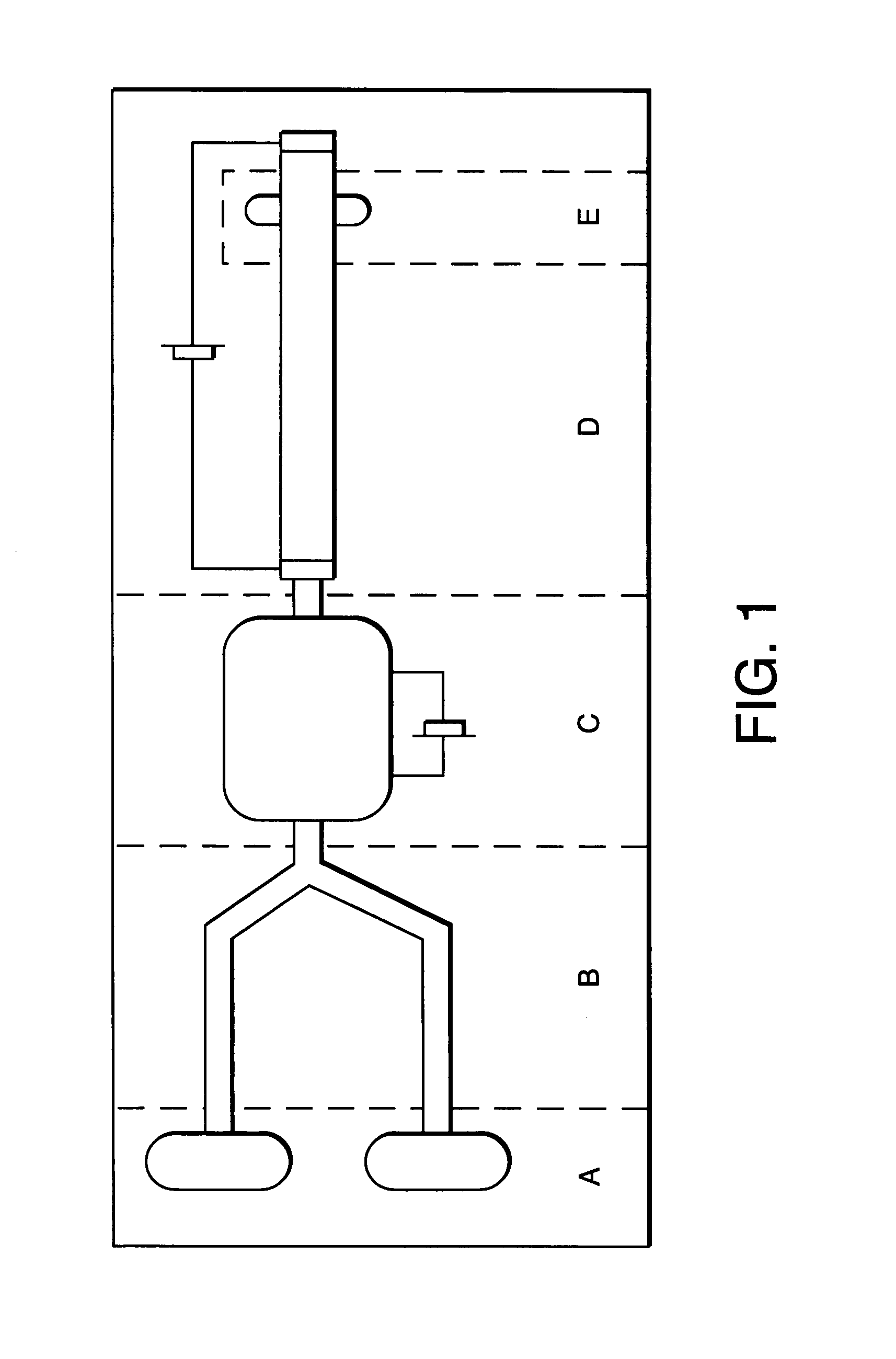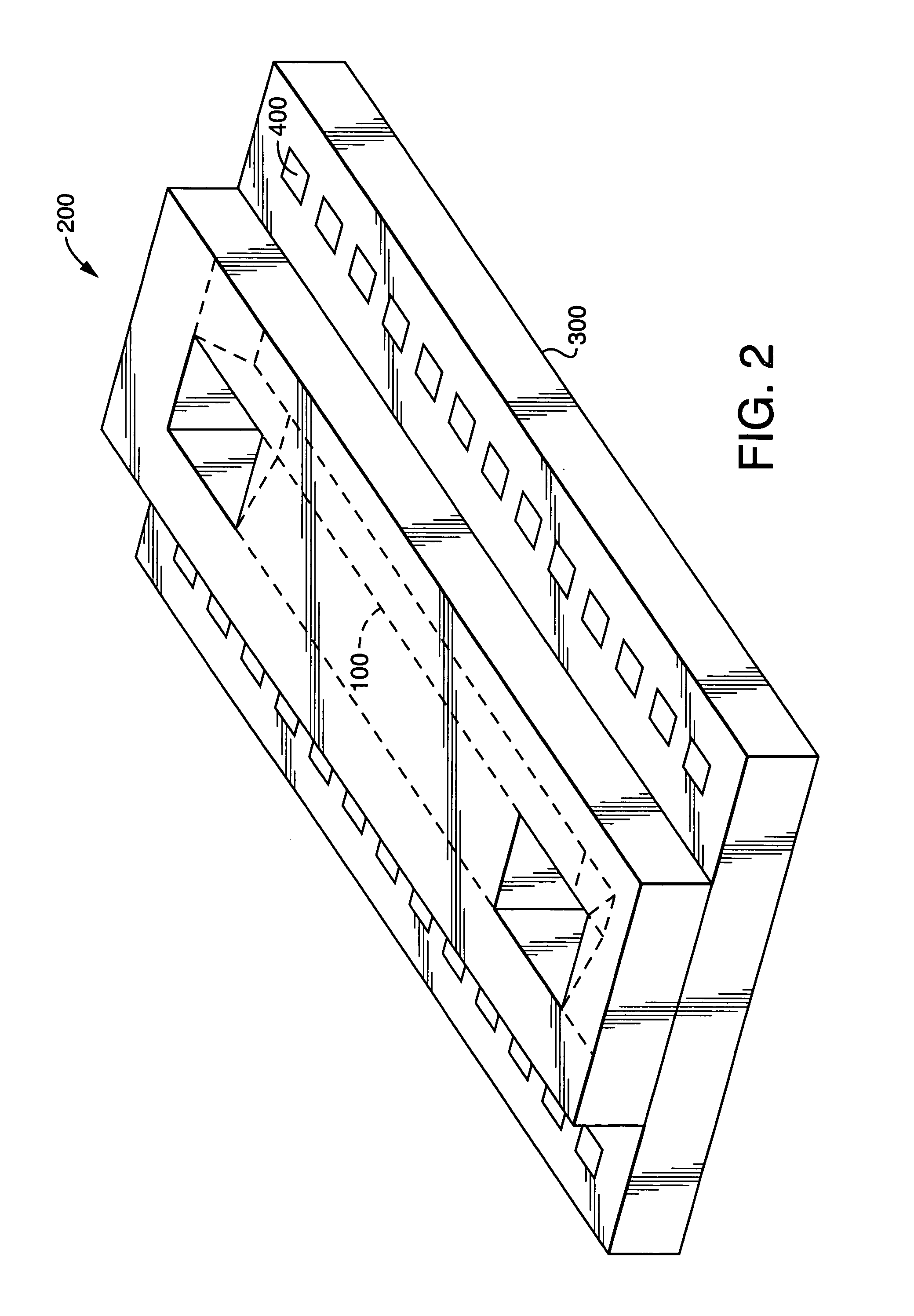Thermal micro-valves for micro-integrated devices
a technology of micro-integrated devices and thermal micro-valves, which is applied in the direction of valve operating devices/release devices, transportation and packaging, laboratory glassware, etc., can solve the problems of complex integrated systems that can be easily assembled into multi-component devices, and achieve the effect of preventing short circuits and/or damage to electronic elements, and enhancing the degree of mixing in a merged microdropl
- Summary
- Abstract
- Description
- Claims
- Application Information
AI Technical Summary
Benefits of technology
Problems solved by technology
Method used
Image
Examples
example 1
[0219]In this example, a microdevice is fabricated as per U.S. Pat. No. 7,048,734 to Burns et al. and which is herein incorporated by reference. The test structure is very simple. The main part is constructed from a two mask process with five layers of materials on top of the Si substrate. Proceeding from the lowest to the uppermost layer, the SiO2 serves as an insulator between the Si substrate and the other metal layers, which function as solder pads and heating elements. The Ti layer (250 Å) is for adhesion of Ni. The layers of Ni (1000 Å) and Au (1000 Å) act as a diffusion barrier for the solder. The Au layer also serves as a wettable pad. Finally, the layer of solder is for bonding two substrates together. The solder will melt by heating the metal layers. Another substrate that will be bonded has the same construction except for the solder.
[0220]A thermo-pneumatic microvalve is utilized in the test structure. A corrugated diaphragm is chosen for its larger deflection and higher...
example 2
[0227]Design of the Microfluidic Phase Transition Latch Valve. The Primary objective of this work was to construct a microvalve network that would replace external valving for fluidic manipulation on the integrated device. Central for realizing complex fluid motion is an easy-to-fabricate microvalve. For discrete drop systems flow regulation is generally not a concern. An on-off valve to selectively open or close lines would suffice for most of the fluidic manipulation on an integrated system. It is very important that the valve be designed for efficient functioning of the integrated device. The success of the valve was measured against the efficient performance of the integrated device. The single unit valve is compatible with the biochemistry. The valve should introduce few (preferably zero) additional steps to the photolithographic fabrication strategy for integrated devices. Additionally, the valve is electronically addressable. Finally, in order to have a complex network the in...
example 3
[0231]This example examined the properties of several different waxes for use in the valves of the present invention.
[0232]The viscosity of wax was measured as a function of temperature on a constant stress rheometer. The oscillation mode on a cone and plate rheometer was used. The oscillation frequency was set to 6.283 rad / s while the geometry gap was set to 44 microns. All pure waxes showed a sharp transition from liquid to solid at the melting point. Wax mixtures were used to tailor melting points. Wax mixture 2 was a blend of 50% paraffin wax (melting point=49° C.) and 50% M1595 synthetic wax (melting point=85° C.). Upon cooling, this mixture showed a sharp transition around 79–81° C. and then the viscosity gradually increased to the solid phase value till 49° C. which is the melting point of the paraffin wax. Wax mixture 1 which has 25% paraffin and 75% M1595 had a transition around 72–75° C.
[0233]The biocompatibility of the waxes for use in lab-on-a-chip application was tested...
PUM
 Login to View More
Login to View More Abstract
Description
Claims
Application Information
 Login to View More
Login to View More - R&D
- Intellectual Property
- Life Sciences
- Materials
- Tech Scout
- Unparalleled Data Quality
- Higher Quality Content
- 60% Fewer Hallucinations
Browse by: Latest US Patents, China's latest patents, Technical Efficacy Thesaurus, Application Domain, Technology Topic, Popular Technical Reports.
© 2025 PatSnap. All rights reserved.Legal|Privacy policy|Modern Slavery Act Transparency Statement|Sitemap|About US| Contact US: help@patsnap.com



